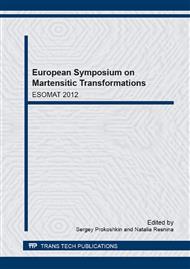p.542
p.549
p.554
p.559
p.566
p.573
p.579
p.584
p.589
Investigation of Electrochemical Behavior of Novel Superelastic Biomedical Alloys in Simulated Physiological Media
Abstract:
This paper focuses on study of the kinetics and the mechanism of passive film formation on novel superelastic biomedical Ti-22Nb-6Ta and Ti-21.8Nb-6Zr (at.%) alloys in simulated physiological solutions using XPS and electrochemical techniques in comparison with commercially pure titanium and Nitinol. In vitro biocompatibility study of Ti-22Nb-6Ta alloy was carried out as well. Ti-22Nb-6Ta alloy manifests a strong trend to protective passive film formation during the first stage of oxidation in simulated physiological solutions. It is shown that Ti-22Nb-6Ta and Ti-21.8Nb-6Zr electrochemical characteristics are comparable to those of titanium and Nitinol, and the alloy can be recommended for use in implantology.
Info:
Periodical:
Pages:
566-570
Citation:
Online since:
January 2013
Authors:
Price:
Сopyright:
© 2013 Trans Tech Publications Ltd. All Rights Reserved
Share:
Citation:


